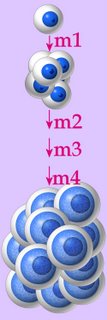Cancer
Cancers arise when cells escape normal controls on cellular proliferation.
Cancer is not a single disease, rather the term encompasses a group of conditions that share the characteristic process of uncontrolled proliferation of cells that are typically capable of local infiltration into other tissues (invasion). This propensity for invasion and migration is associated with the capacity of malignant tumors to metastasize to sites distant from the point of origin.
This propensity for invasion and metastasis is a critical feature that distinguishes malignant tumor from benign tumors. Benign tumors evidence as local overgrowth, but fortunately have minimal or no propensity for tissue infiltration and metastasis.
Cancers are named for the tissue/organ in which they originate. However, the tissue type of cancers from a particulary organ can vary, and even cancers of the same tissue type can vary considerably in degree of undifferentiation, sensitivity to chemotherapeutic agents, growth rate, invasiveness, and metastatic potential.
Alteration of a gene that usually controls cell growth can promote the uncontrolled growth characteristic of cancer. Proto-oncogenes are the normal forms of dominant genes that function in the various signal transduction cascades involved in regulation of cell growth, proliferation and differentiation – and the malignantly transformed versions of proto-oncogenes are termed oncogenes.
For example, mutation in a proto-oncogene, such as a gene that encodes an intracellular signaling protein that is normally activated only by extracellular growth factors, converts the proto-oncogene into an oncogene. The malignantly transformed oncogene encodes an altered form of the signaling protein that now behaves as though activated even in the absence of controlled growth factor binding. The malignant cell line has escaped normal gene regulation and cell cycle control mechanisms and exhibits unchecked proliferation.
There are many excellent sites with information for those affected by cancer, so the purpose of this site, in conjunction with the companion sites, is an exploration of the cell and molecular biology of malignancy.
synonyms : cancer, tumor, malignancy, neoplasm; cancerous, tumorous, malignant, neoplastic; cancer, neoplasia, oncology.
related items ¤¤ adenoviruses ¤ amplification ¤ carcinogenesis ¤ c-Fos ¤ c-Jun ¤ c-Myc ¤ c-Sis ¤ estrogen receptors ¤ gene amplification ¤ genetic predispositon ¤ HBV ¤ HIV ¤ HPV ¤ HTLV-I ¤ immune evasion ¤ irradiation ¤ malignant transformation ¤ metastasis ¤ mitogens ¤ mutagens ¤ MYC ¤ mutations ¤ neoplasia ¤ neoplastic mutations ¤ NF-κB ¤ non-mutagenic carcinogens ¤ oncogenes ¤ p53 ¤ proliferation ¤ proto-oncogenes ¤ radiation ¤ Ras ¤ Rb ¤ retroviral mechanisms of carcinogenesis ¤ retroviruses ¤ signaling molecules ¤ SRC genes ¤ T-antigens ¤ TP53 ¤ tumor antigens ¤ tumor suppressors ¤ tumorigenic viruses ¤ viral carcinogens ¤ v-Fos ¤ v-Sis ¤ v-Myc ¤

